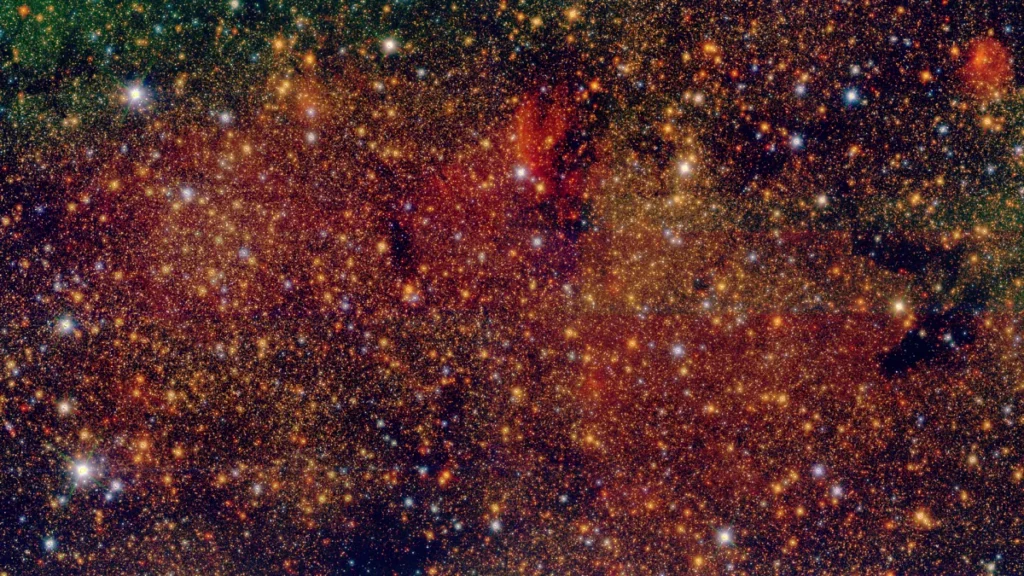Here’s a mind-blowing fact that we need to deal with: if our planet had been located close to or in the Milky Way galaxy’s core, the entire sky would have been shining permanently. There would be no such thing as nighttime anymore, nor the huge amount of legends and myths linked to it. The explanation is very simple: while our Milky Way contains roughly 200 billion stars, these celestial objects are a lot more prevalent at the galaxy’s core.
Instead, our Solar System, along with our planet, is located much closer to the outskirts of the Milky Way galaxy rather than its core. We can certainly be very thankful to Nature that it happened in this way, as the world would have been boring without a song like “Where Did You Sleep Last Night?” from Nirvana. But at the same time, astronomers can surely uncover a sparkling astronomical treasure once they focus their attention on the heart of the Milky Way using powerful telescopes.
Eyes set on the Sagittarius B1 region from the Milky Way’s Galactic Center
Space.com tells us that for the first time, astronomers have figured out how star formation began and unfolded at the heart of our galaxy. They have been studying an area of 64,000 square light-years around the galactic center using the HAWK-I infrared camera of the Very Large Telescope (VLT) from Chile. They obtained more detailed results than ever before.

Surprisingly or not, the new results also show that star formation radiated out from the galaxy’s core while the young stars had to dissipate.
Francisco Nogueras-Lara, a participant in the new research, explained:
Our study represents a big step forward in finding the young stars in the galactic center,
The young stars we found have a total mass of more than 400,000 solar masses. That is nearly ten times higher than the combined mass of the two massive star clusters that were previously known in the central region.
While our Milky Way galaxy is known to have a diameter of about 100,000 light-years across, our Solar System is positioned roughly 27,000 light-years from the galactic center and within one of the four spiral arms of the disk.















Leave a Reply